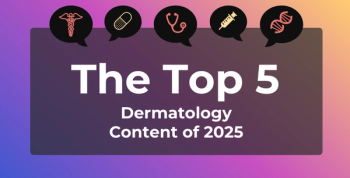
Racial Disparities in Ovarian Cancer Could Increase as Trends Point to Access Barriers: CK Wang, MD
CK Wang, MD, chief medical officer of COTA, highlights how a lack of screening tools and declining ob-gyn pipeline can compound historical disparities seen in Black women's access to care.
Black women are disproportionately diagnosed with advanced-stage
CK Wang, MD, a hematologist-oncologist and the chief medical officer of COTA, discusses how workforce shortages, especially in specialized medicine like gynecologic oncology, threaten to widen these care gaps further, with rural areas where access to specialists is already limited likely to be impacted most.
This transcript has been lightly edited; captions were auto-generated.
Transcript
COTA’s analysis shows Black women are the most likely to be diagnosed with advanced-stage ovarian and breast cancers. Can you discuss the implications of these data?
Ovarian cancer is a difficult cancer to treat, in the fact that there is no good screening tool. There have been many studies looking at laboratory tests, even sonograms—screening tools that could help us detect these cancers at an earlier stage. However, none of those studies have panned out. Therefore, today, women oftentimes present with really vague symptoms. Given the trend that we see with other cancers—[such as] breast cancer—where Black women tend to be diagnosed at a later stage, you can see that in a disease where we don't have good screening tools, that disparity of care or diagnosis and that disparity of access to care can translate to higher disease stage at diagnosis.
What’s more difficult for a disease such as ovarian cancer is the fact that there are very few gynecologic oncologists here in the US. In fact, the latest estimates show that there are only 1300 to 1500 gynecologic oncologists practicing in the [US], and that is significantly smaller than the demand. Not only do we see the historical racial disparity, but when you see this big disconnect when it comes to access to care, that’s when the trend becomes very troublesome.
With declining ob-gyn residency applications, particularly in rural areas, how do you see this trend affecting cancer detection and care for underinsured or uninsured women?
I think the trend will continue to worsen unless we do something about it. You know, there are no good solutions, in my opinion, to turn the tide on the trend that you just cited. Residency applications will fluctuate from year to year. Ob-gyn residency applications we've seen in the post-Roe era have fluctuated tremendously. I think there was a humongous drop right after Roe was overturned, that subsequently, I believe in 2023, we saw a slight uptick. But there still remains an overall trending decline, so to speak.
There have been studies to show that the rate of application varies dramatically depending on the region of the country as well. What this means is that the onus and burden of care of women's cancers will lie primarily in the detection space in the hands of primary care providers, and in the treatment space, it would be the general oncologists who are practicing in those areas. Now, keep in mind that general oncologists are trained to take care of many different cancers, but the first step to the treatment of almost any cancer is surgery. And that's where specialty-trained surgeons are needed. Because without access to that definitive care or standard of care, I would say that everything else subsequent to that, in terms of outcomes, will be less than ideal.
Newsletter
Stay ahead of policy, cost, and value—subscribe to AJMC for expert insights at the intersection of clinical care and health economics.








